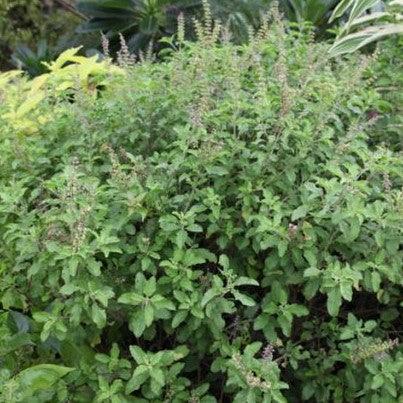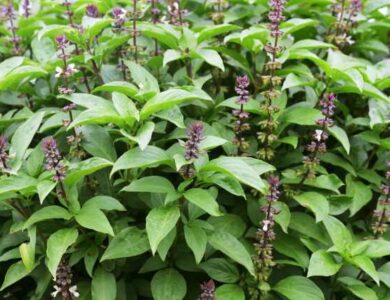Keeping Your Tulsi Happy and Healthy: A Guide to Watering Right

The sacred Tulsi plant, also known as Holy Basil, thrives on consistency, especially when it comes to soil moisture. While it needs consistent moisture, it’s crucial to avoid waterlogging which can lead to serious problems. So, how do you find the sweet spot for your Tulsi’s happiness? Let’s explore some key guidelines:
Finding the Watering Rhythm:
- Touch Test: Your finger is your best friend! Stick your finger into the top inch of the soil. If it feels dry to the touch, it’s watering time. Avoid letting the soil completely dry out.
- Deep and Direct: When you water, go deep! Ensure the water reaches the roots, where it’s needed most. Watering directly at the base of the plant is better than overhead watering, reducing the risk of leaf diseases.
- Drainage is Key: Ensure your Tulsi’s pot has proper drainage holes to prevent waterlogging. Soggy soil is a breeding ground for root rot and other issues. If the soil feels consistently wet, adjust your watering schedule.
- Mulch Magic: A layer of organic mulch like straw or dried leaves around the base of the plant can work wonders. It helps retain moisture, regulates soil temperature, and discourages weeds.
Morning Mists:
- Early Bird Watering: Watering your Tulsi first thing in the morning allows any excess moisture on the leaves to evaporate during the day, reducing the risk of fungal problems.
- Plant Talk: Pay close attention to your Tulsi’s responses. Drooping leaves often indicate underwatering, while yellowing or wilting can signal overwatering. Adjust your watering habits accordingly.
- Tailor Your Approach: Climate, temperature, and soil type can influence your Tulsi’s watering needs. Be observant and adapt your practices based on your specific environment and the plant’s individual cues.
By following these simple tips, you can ensure your Tulsi receives the perfect amount of water, keeping it healthy and vibrant. Remember, a happy Tulsi is not just a beautiful addition to your home, but also a symbol of purity and well-being.
Bonus Tip: Consider using rainwater or filtered water for your Tulsi, as it’s free of harsh chemicals that can harm the plant.
Maintaining Optimal Conditions:
- Watering Wisdom: Overwatering is a leading cause of fungal diseases. Water deeply but infrequently, allowing the soil to dry slightly between waterings. Adjust based on climate and season.
- Drainage Matters: Ensure your Tulsi pot has proper drainage holes to prevent waterlogging, which invites disease.
- Light it Up: Provide your Tulsi with bright, indirect sunlight for at least 6-8 hours daily. Insufficient light weakens the plant, making it susceptible to disease.
- Air Circulation is Key: Good air circulation around the plant helps prevent moisture buildup and disease spread. Regularly remove dead leaves and prune congested branches.
Boosting Defenses:
- Nutrient Richness: Feed your Tulsi with a balanced organic fertilizer or compost tea every 2-3 weeks during the growing season. Healthy plants are better equipped to fight off infection.
- Neem Oil as a Shield: Applying diluted neem oil spray regularly (every 2-3 weeks) acts as a natural fungicide and insect repellent, adding an extra layer of protection.
- Garlic and Ginger Power: Create a natural fungicide by soaking garlic and ginger cloves in water. Spraying this solution can help prevent and manage fungal diseases.
Prevention is Key:
- Start Clean: Use sterilized potting mix and tools to avoid introducing pathogens.
- Quarantine Newcomers: Isolate any new plants for a few weeks before introducing them to your existing Tulsi, especially if they come from unknown sources.
- Clean Up Regularly: Remove and dispose of fallen leaves and diseased plant parts immediately to prevent the spread of infection.
- Observe and Act: Regularly inspect your Tulsi for signs of disease like discoloration, spots, or wilting. Early detection and treatment are crucial for successful control.
Remember, a healthy Tulsi is a disease-resistant Tulsi. By following these tips and providing your plant with the care it deserves, you can protect your precious Tulsi and keep it flourishing for years to come.




